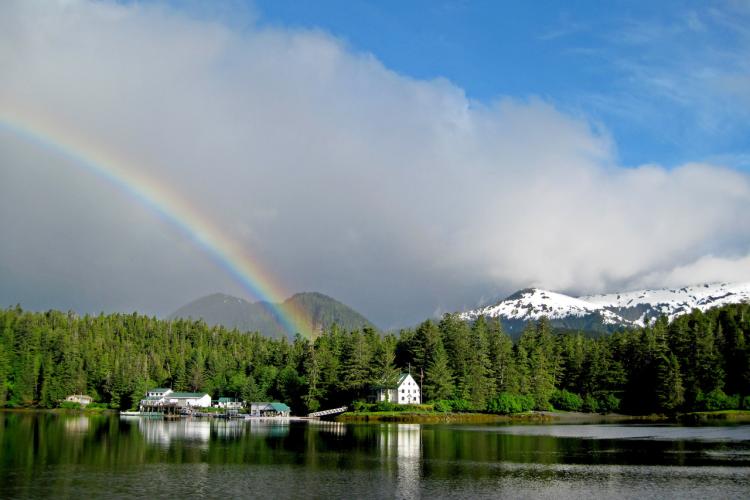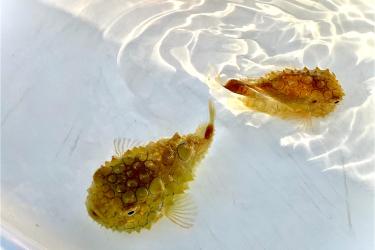
Little Port Walter Marine Research Station.
Over the next few weeks, I will share some of the salmon research that I am involved in to quantify the effects of two tagging techniques - tiny (coded-wire) tags and adipose fin clips - on marine survival. These techniques are commonly used in salmon hatcheries. This work is being conducted at the Little Port Walter Marine Research Station, which has a long history of salmon aquaculture research, with 215,000 juvenile Chinook "king" salmon.
Chinook are the largest Pacific salmon species, growing (on average) to be two to three feet long and approximately 15-25 pounds. They can spend anywhere from one to six years at sea before they reach maturity and return to their natal river to spawn.

Charlie Waters, Research Fish Biologist.
Meet the Blogger
Charlie Waters is a Research Fish Biologist for NOAA Fisheries’ Alaska Fisheries Science Center, Auke Bay Laboratories in Juneau, Alaska. As a member of the Ecosystem Monitoring and Assessment Program, Charlie assists with research efforts to better understand Alaska’s Large Marine Ecosystems, including how environmental variation may affect the distributions and abundances of key species. He also provides research support to NOAA’s Little Port Walter Marine Research Station, Alaska’s oldest year-round biological field station. He obtained B.S. degrees in Biology and Environmental Science from the University of North Carolina at Chapel Hill and a Ph.D. from the University of Washington, where he used advanced genomic and statistical approaches to better characterize genetic and phenotypic risks associated with salmon hatchery rearing.
This post was revised on 4.13.19


